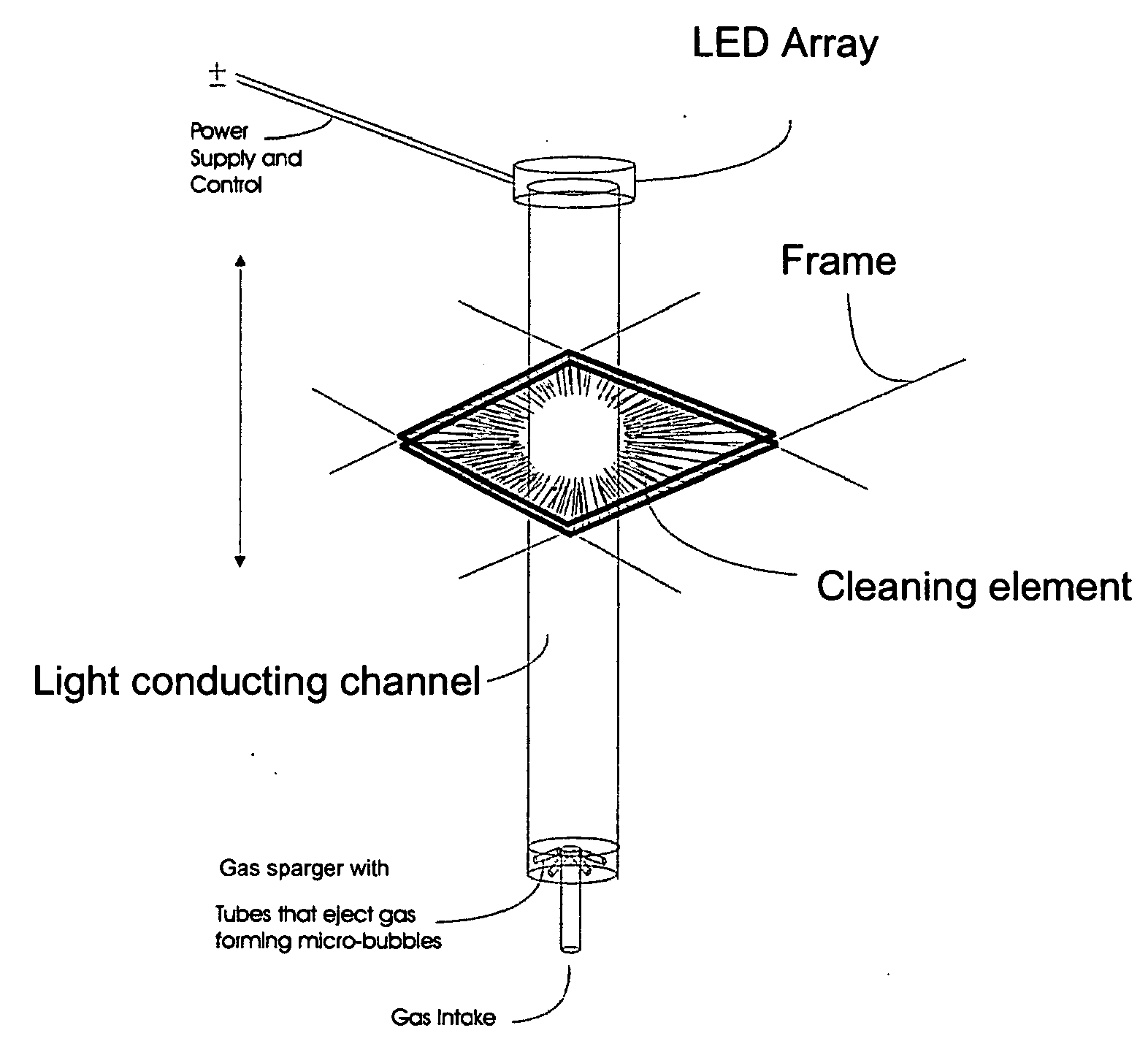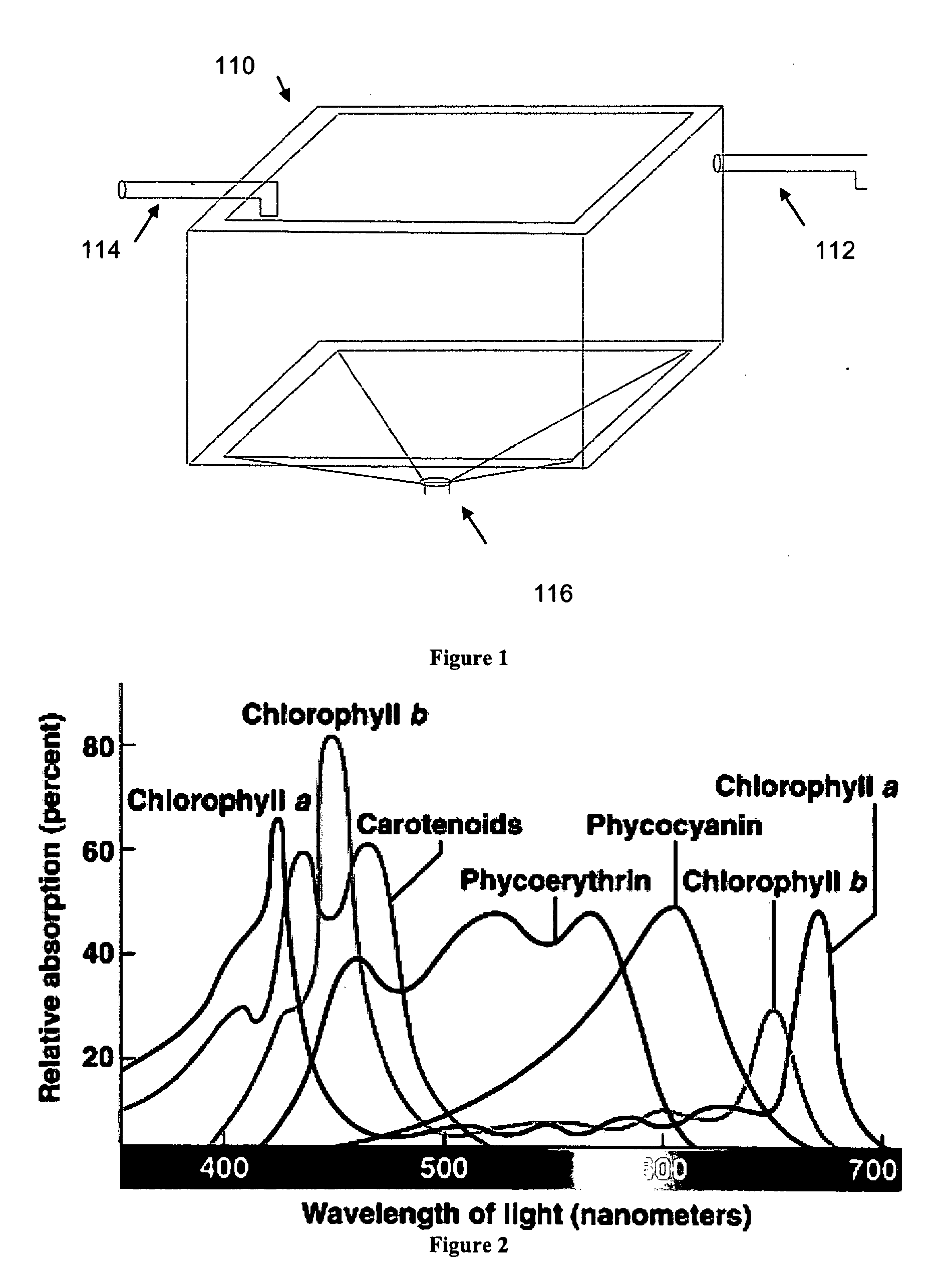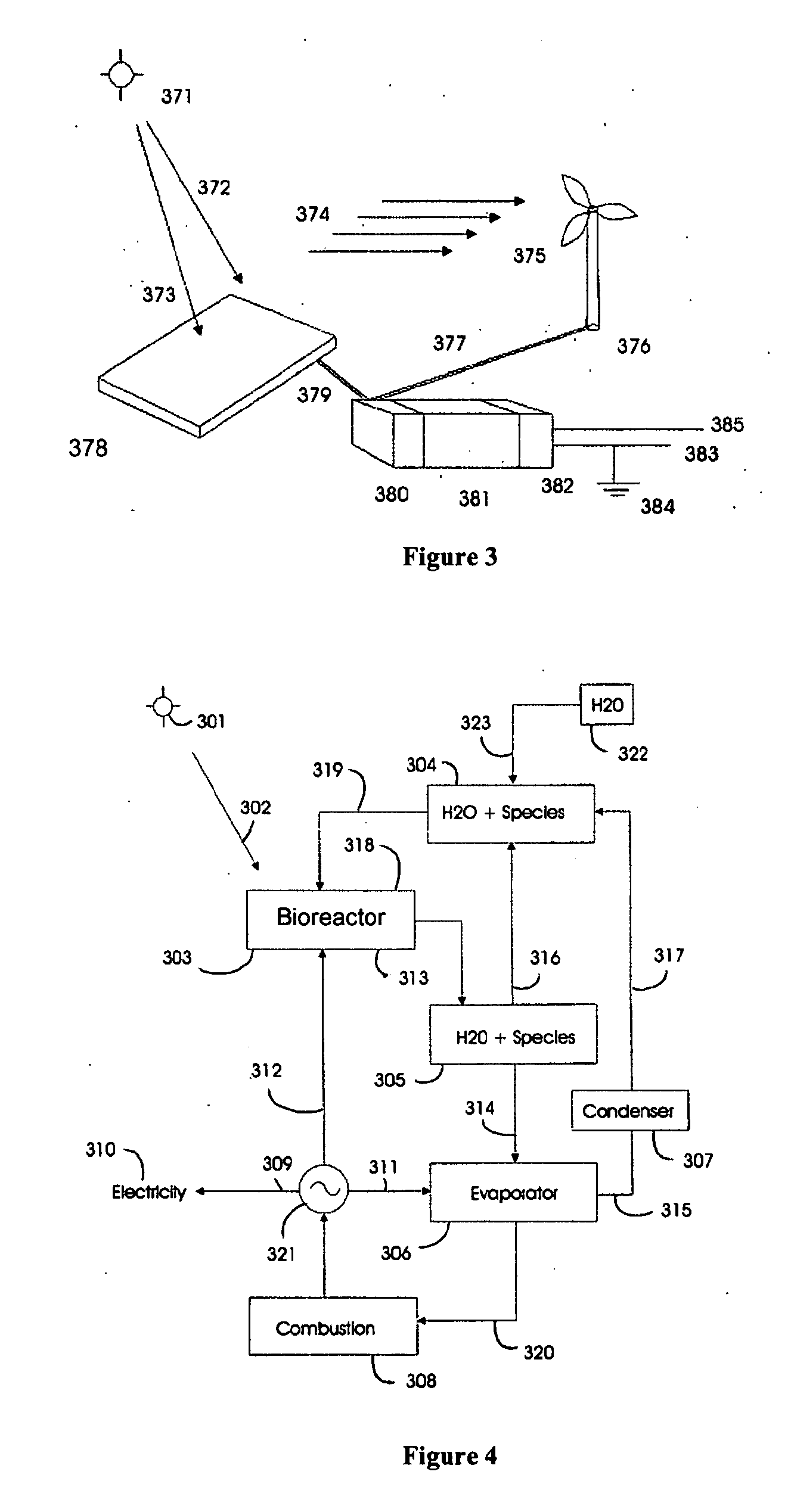Bioreactor
a bioreactor and microorganism technology, applied in the field of bioreactors, can solve the problems of affecting the economic viability of photoautotrophic organisms for energy production affecting the economic viability of photoautotrophic organisms for growth and other high value products, so as to maximize the growth rate and maximize the growth of photoautotrophic organisms
- Summary
- Abstract
- Description
- Claims
- Application Information
AI Technical Summary
Benefits of technology
Problems solved by technology
Method used
Image
Examples
example 1
A Bioreactor Powered by Photovoltaic Panels
[0247]FIG. 6 shows a bioreactor system deployed on a skid (281). The bioreactor system can comprise a bioreactor (294) and a solar photovoltaic panel array (282) that produces electricity during sunlight hours that is used directly, and charges a battery bank with controller (283). The electricity can be used to power the bioreactor system and all components therein. The bioreactor can comprise a light emitting source for supplying light to photoautotrophic organisms growing in one or more containers of the bioreactor. The one or more containers, a light emitting source, all electrical interconnection, and a computer loaded with the computer control programs to control the bioreactor system can be housed in an enclosure. Oxygen vents (293) can be used to vent unabsorbed gas and oxygen from the bioreactor.
[0248]A media tank (286) containing a growth media and the species of autotroph to be cultivated can be mounted on the skid. An intake val...
example 2
Energy Cycle for Using Solar Energy to Produce Energy and Biomass Products
[0249]FIG. 7 shows an energy cycle for producing renewable energy. Nature chose to sequester fossil fuels in the earth (265). Coal (266), oil (267), and natural gas (268) are used world wide for chemical fuels and increases the carbon dioxide (253) and other greenhouse gas concentrations in the atmosphere (264). Exo-atmospheric carbon, such as coal, oil, and natural gas, can be replaced with a renewable energy sources, such as biomass (258). Biomass (258) can be produced using a process (257) that utilizes an optimized photosynthetic process in a bioreactor. The photosynthetic process can utilize nutrients (255), water (254), and light (252). Photoautotrophic organisms can be grown using the optimized photosynthetic process (258) and can be processed for oil (259), protein, carbohydrate, amino acids, dyes, and other organic compounds (260), and press cake (261). The press cake can be used for animal feedstock,...
example 3
Spectrum of Light Emitted by a White Light Emitting Diode
[0251]FIG. 8 shows a spectral distribution for a white light emitting diode. The vertical axis (111) is number of photons or relative luminescence intensity. The horizontal axis (112) represents wavelength. Position 113 represents 300 nm, which is the lower limit for photosynthetically available radiation. Position 114 represents about 800 nm. The white light emitting diode spectrum (117) falls between positions 115 and 116, which are between 113 and 114.
[0252]The sun has a temperature of approximately 5,774 Kelvin. The white light emitting diode has a distributed spectrum that approximates a 6,000 degree Kelvin blackbody radiator. The white light emitting diode can match the natural blackbody radiance of the sun.
PUM
| Property | Measurement | Unit |
|---|---|---|
| diameter | aaaaa | aaaaa |
| diameter | aaaaa | aaaaa |
| diameter | aaaaa | aaaaa |
Abstract
Description
Claims
Application Information
 Login to View More
Login to View More - R&D
- Intellectual Property
- Life Sciences
- Materials
- Tech Scout
- Unparalleled Data Quality
- Higher Quality Content
- 60% Fewer Hallucinations
Browse by: Latest US Patents, China's latest patents, Technical Efficacy Thesaurus, Application Domain, Technology Topic, Popular Technical Reports.
© 2025 PatSnap. All rights reserved.Legal|Privacy policy|Modern Slavery Act Transparency Statement|Sitemap|About US| Contact US: help@patsnap.com



